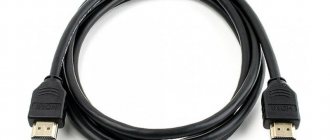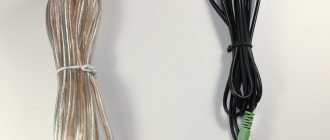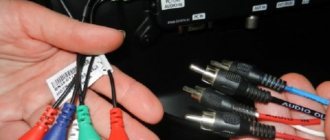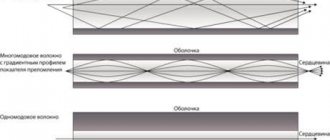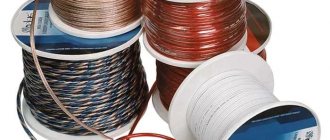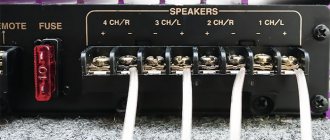A good speaker cable for speakers is an important condition for unlocking the full potential of an expensive audio system. Many buyers of high-tech entertainment complexes often tend to underestimate the importance of selecting high-quality switching elements. Using the base wires supplied by the manufacturers, you will get average sound quality even with the optimal selection of the remaining components of the complex. And only after spending on a good cable for an audio system, provided it is selected correctly, will you feel the difference and understand what you paid a lot of money for.
That is why we recommend that you do not try to save on “rodless” cables, but use the algorithm we offer for selecting these products. By listening to our recommendations, you will probably at least narrow down your options. And when you ask for help, you will get the best speaker cable for speakers for the budget at your disposal.
So, what factors should you pay attention to first?
What is speaker wire
An acoustic cable is a wire designed to transmit a signal to amplifiers, such as speakers. Unlike conventional ones, it guarantees sound transmission without distortion.
Speaker wires vary in material and thickness
Important! Speaker wires ensure the correct operation of the entire system, so you need to choose them carefully.
A little theory: how sound works
The task of a sound reproducing device is to convert signals. This can be either the “conversion” of analog information into digital information, or vice versa. Or the transformation of a mechanical wave into an electric current, as happens when playing from vinyl media.
The audio system roughly consists of four functional units:
- Playback object plus pickup
. This could be a digital stream when downloading music from the Internet, a vinyl record with recorded tracks, a plastic CD with the same tracks, only of higher resolution, an audio cassette with magnetized sections, and so on;
- Converter for converting one type of energy into another
. It converts the digital signal into electrical current that is sent to the speakers; it turns the vibrations of the vinyl player needle into an electric current going to the speakers... The opposite situations also occur - when you need to turn the electric current into something else. For example, when recording from a microphone;
- Amplifier
. The current that comes from the converter is extremely small. Basically, its power is measured in microamps. It won’t be able to “drive” the speakers at 35 W. The amplifier is designed to increase the current strength;
- Speakers
. A signal of increased power already arrives at them. It causes a magnet attached to the membrane to vibrate. And it, in turn, vibrates and pushes the air, giving birth to sound.
Each of these functional elements of the music reproduction system is connected to another by wires. And if you can, in principle, ignore the cables between the pickup, transducer and amplifier - they are too short - then the long wires to the speakers are already becoming an object of close interest.
As you know from a school physics course, the longer the length of the conductor, the higher its total resistance. Because of this phenomenon, part of the signal simply “does not reach” the receiver, getting lost in the thickness of the cable. For example, Ethernet wires used to lay local area networks can be up to 90 meters long without amplification. And HDMI cables begin to lose signal after 20-30 meters.
When installing a speaker system, you have to use long wires. Not only can the speaker itself be located at a considerable distance from the amplifier, but the cables must also be laid so that it does not interfere with your feet. And, as a result, the length of the conductor is constantly increasing.
Ordinary wires, in principle, have a relatively high resistance. In thin versions it even reaches several ohms per meter. As a result, when transmitting current, part of the signal is lost in any case. Especially if several waves of different frequencies are sent simultaneously through the cable.
To solve this problem, it is common to use acoustic wires. They most often consist of oxygen-free copper and are complemented by gold-plated tips. All this is designed to reduce the resistance of the wire, thereby ensuring highly accurate signal transmission over long distances.
However, the idealized picture of the world, in which only the cable affects sound quality, tends to crumble somewhat against reality. After all, it is worth considering two more factors:
- All elements of the audio system must be of high quality, classified as Hi-Fi or Hi-End. If you have a class D amplifier like the Pioneer A 70 DA and an acoustic system like the Tannoy Revolution XT 8F, then you can connect them using wires found in your grandfather’s garage. The sound will still be impressive. And even the best speaker wires will not be able to “pull” audio from the sound card integrated into the laptop with connected Dexp speakers;
- The older we get, the worse we hear. Scientific research confirms that after 20 years a person cannot distinguish between ultra-high and ultra-low frequencies.
Thus, it is advisable to buy speaker wires when installing Hi-End equipment.
Characteristics
Typically, conductive cores are made of copper. This material is ideal as it is wear-resistant and accurately transmits all sound frequencies. They use both technically pure copper as a budget option, and oxygen-free copper, which has better conductivity. The best, but also the most expensive material is pure copper, which creates correct sound transmission.
Pure copper speaker cable
Cores are also made from silver. This option is the least popular due to its high cost. Silver has remarkable electrical conductivity, which guarantees quality.
Note! In addition to the core material, insulation is of great importance. The service life, absence of interference and noise depend on it.
Teflon (the most suitable, but rare material) and polypropylene are used as insulation. Polyvinyl chloride (PVC) is also widely used, unfortunately, it is inferior in its characteristics and even distorts the sound.
The wire consists of one or more current-carrying wires, but their number and thickness do not affect sound transmission, but strength depends on it. The more cores and the smaller their diameter, the more elastic the cable.
An acoustic cable can be made of several cores
The cross-section varies from 0.25 mm² to 4 mm². You should choose the thickness based on your own needs. Audio system manuals usually list the recommended speaker cable gauge. Otherwise, the required cross-section is calculated from the resistance of the material and the speaker itself, the length of the wire and the power of the amplifier. A cable that is not wide enough will not transmit the entire frequency range, which will noticeably affect the sound. However, the thicker the wire, the higher its cost.
You might be interested in: Features of cable corrugations
Structure
Audio cable conductors can be made of copper and its alloys, or aluminum with an external copper coating. The number of cores is from 2 to 4. The insulation is made from high quality PVC materials, usually black. All audio wires have a highly flexible sheath.
Speaker cable structure
On the outside there is a safety screen made of copper braid. Its main purpose is to reduce the degree of influence of external electromagnetic distortions during the transmission of the main electrical signal. In this case, with the appropriate density of the outer braid, the efficiency of the protection system reaches its maximum value. There is a marking on the insulation that indicates the material of the wire and its functional characteristics.
Among the main properties for an audio wire are:
Ultimate resistivity - 5% of the total resistance of the complete system;
- Operating temperature range - from - 40 to + 60 C.
- The minimum bending radius during installation is the outer diameter of the AK.
- Construction and installation length is more than 25 m.
- Service life guarantee - more than 10 years.
Audio cable application
What types of speaker wires are there?
Speaker cables are divided into monolithic and multi-core, which come in three types.
Beam-shaped
The cores are unevenly positioned, which has a significant impact on sound quality. The beam-shaped structure does not suppress noise well. This is the least successful option for speaker systems.
Bundle-shaped core in speaker cable
Concentric
The cores are distributed evenly inside the wire. This cable has a constant cross-section, which contributes to high quality.
Concentric structure
Rope
The rope structure is an improved concentric one. This is a great option. Such cables are the most flexible and elastic.
Rope structure acoustic cable
Where to buy high-quality speaker cable
You can contact hardware stores. But the model of the manufacturer you have chosen is not always available. Therefore, the easiest way is to order online from an online store. All well-known companies have virtual trading platforms, so finding what you need won’t be difficult. Here you can read the product description, its characteristics, read customer reviews and find out the opinions of experts. In addition, information about any new products in this area is available here. For example, fiber optics, the operation of which is based not on electric charge, but on light. This way you can form the most correct opinion and decide which speaker cable is best to buy.
How to choose the right speaker wire for speakers
There are several factors to consider when choosing a speaker cable.
The core material must have low resistivity and excellent electrical conductivity. Copper is good if the amount of impurities in it does not exceed 1%. Winding with noble metals improves the quality. If the speakers are used in a spacious room, you should not skimp on a good cable. For professional audio systems, the best solution is a silver core, whose resistance is significantly lower than that of copper. You should not use a tin-coated wire, as it does not transmit high-frequency sounds.
Important! The shorter and thicker the wire, the higher the sound quality.
How to choose the cross-section of speaker cable for speakers? This will depend on the resistance required. It should be no more than 5% of the resistance of other system components. This ensures that all audio frequencies are transmitted. It must be remembered that resistance increases with increasing length and decreases with increasing diameter.
Finding out which wire is needed for a particular system is simple:
- Calculate the maximum resistance. Multiply column resistance by 0.05.
- Calculate the resistance. It is the product of the resistivity of the material and the length divided by the cross-sectional area.
- Compare the data obtained. The result of the second point should not exceed the result of the first. Otherwise, you need to take a larger diameter wire or shorten it.
High-quality wires are smooth and round. Do not forget about the insulation; damage to it is unacceptable. The correct cable is soft to the touch and bends easily. For connection to speakers, for example, Speaker is suitable, the core of which is made of high-quality oxygen-free copper.
You might be interested in this Features of cross-linked polyethylene cable
Conductor cross-section and length
Wire cross-section is another important factor when selecting such products for Hi-Fi
and
High End
.
With a small cross-sectional area, the complex will not receive the proper signal power, which will manifest itself as insufficient low-end sound and weak dynamics. Therefore, the minimum cross-sectional area of the wire must be at least 2.5 mm²
.
The length of the cable also has a noticeable, but dual, effect on the sound of the speaker system. On the one hand, the laws of physics strongly recommend reducing the length of the conductor, which should reduce the level of interference and signal distortion. On the other hand, good speakers should not be located close to the amplifier. Based on this, the best speaker cable cannot be short. Therefore, before purchasing it, it is necessary to find the optimal length from these two conditions. Be sure to ensure that it also has a certain length reserve and does not lie stretched. It is also worth considering that when laying the conductor hidden in the grooves, it is necessary to provide a length reserve for this event. In addition, in this case, pay attention to the mechanical strength of the insulating material and shielding.
How to connect speaker cable
First of all, you should make sure that all audio system devices are disconnected from the power supply. When connecting the cable to the speakers, you must observe the polarity, guided by the color markings or plus and minus symbols.
For connection it is recommended to install banana connectors
Speakers can have either spring clamps or screw terminals. Their features:
- bare wires are inserted into the spring clamps. The mechanism of such connectors firmly clamps the cable, they are easy to work with, but you cannot connect “Bananas” or “Spade”;
- All types of plugs are used for connections using screw terminals. To connect bare wires or “Spades”, you need to unscrew the nut and then clamp the connector with it. "Banana" and "Double Banana" are inserted directly into the terminal hole. There is no need to unscrew the nut.
You can install a “Spade” type connector on the ends of the wires.
Using this type of connection is not as convenient, but it holds the cable more securely. The connection must be strong to ensure high quality sound.
Thus, not just any wire will work for audio systems. The ideal speaker cable is short, fairly thick, has low resistance and good insulation. It is equally important to know how to connect everything later in order to hear the clear sound promised by the cable manufacturers.
Calculation of the cross-section for food in a car
An important point when building a sound circuit is to choose the correct power supply for the amplifier; the most popular now is the KG cable - the price/quality is at the level, it is quite easy to find it in any corner of our vast world. But problems arise with the choice of section...
I’ll look ahead a little and write the formula for max power, roughly Pmax = U*I* Efficiency, where Pmax is the maximum power of the amplifier, U is the voltage at the amplifier terminals, I is the maximum current consumed by the amplifier - one of the most correct options to find out the max. current, look at the fuse rating. For example, the maximum power for an amplifier with a 30A fuse at a voltage of 14V and efficiency (most amplifiers are class AB, 50-60% efficiency) will be approximately 210 W. It is worth realizing that the maximum power on amplifier boxes in most cases is a marketing ploy.
Why do audiophiles pull so much “force”?
From the point of view of an electrician, to operate an amplifier of 30A at 14V, a PV2 wire of 1*2.5 or a little more is enough. In fact, the amplifier will work, the audiophile's point of view is different
Safety
Let me give you an example: thin metal threads at high current, for example in a hair dryer or very old heaters. Thin metal threads have a very high resistance and will heat up when high currents flow; hair dryers have a beautiful red glow. If in heaters or hair dryers the release of heat is their main task, then the task in the AZ is exactly the opposite. When heat is released, the insulation melts, an odor appears, and a short circuit to ground occurs a little later. Before the short circuit, the current consumed by the amplifier flowed through the wire, after which it was much higher. The result will be a fire with all the consequences... To protect the wire from heating, fuses are used that are associated with the maximum current strength for this wire, there will be a separate post about this.
We're losing watts
The task of the power wires in the AZ is to transmit voltage with minimal losses. What does it mean?
A wire is essentially a simple piece of metal that has a certain electrical resistance. And the thinner it is, the higher its resistance. When current flows through the wire, a certain voltage drop occurs across it, which means that the supply voltage at the amplifier terminals drops by exactly the same amount. This is especially noticeable at times when it consumes a lot of current (for example, when playing powerful bass). Hence the conclusion - the cross section increases with increasing audio system power.
Now let's move on to calculating the cable cross-section we need:
Suppose we need to connect an amplifier that can consume a maximum current of I = 30 A. We will place it in the trunk and to connect it to the battery we will need a cable 8 meters long (“+” and “-” from the battery).
Option #1. Using ready-made tables
4Ga (21.15mm2)
4Ga (21.15mm2)
Conclusion: Take a 4Ga or 25mm2 cable
Option #2. Let's remember physics
Requirement: Voltage loss no more than 0.5 Volts at the maximum current consumed by the amplifier.
Ohm's law R =U/I; R - total cable resistance, U - drawdown voltage of 0.5 V, I - current of 30A
From here we find the total total resistance of the cable R = 0.5/30 = 0.017 Ohm. Let's divide the total resistance of the cable R by the length L = 8 meters and find the linear resistance of the cable i.e. resistance of 1 meter of the cable we need, let's call it R1m =R/8=0.0021 Ohm
Option #2. Method No. 1 “A little” is ideal
R1m = r/S, where r is the resistivity of copper = 0.0175, S is the cable cross-section From here S= r/R1m = 0.0175/0.0021 = 8.33 mm2, the nearest cross-section is 10 mm2
This means that a cross section of 10 mm2 is enough for the “drawdowns” to be less than 0.5V
Option #2. Method number 2 More realistic
We select the required cross-section according to GOST 22483-2012 (class 5) 1.21 Ohm/km for 16mm2 i.e. 0.00121 Ohm/m < 0.0021 Ohm/m 1.91 Ohm/km for 10mm2 i.e. 0.00191 Ohm/m < 0.0021 Ohm/m
And again 10 mm2 is enough.
Option #3. Using programs based on the calculations above.
In order not to waste a lot of time, I coded a simple utility, I think even a schoolboy can figure it out:
Cable classes
Download cable cross-section calculation program
Power loss due to voltage drop
Here, too, everything is conditional, we will not ask questions about the principles of operation of the amplifier, the conversion of direct current to alternating current, different resistances, etc. I repeat, everything is conditional:
10mm2
We calculate the voltage loss U=R*I = 0.00191 * 30 * 8 =0.46 Volt We calculate the maximum power of the amplifier (approximately) P = I*U*Amp efficiency AB = 30 * 14.4 *0.5= 216 Watt
We calculate the power loss P=I*U*Amp efficiency AB = 30 * 0.46 * 0.5 = 6.9 Watt
25mm2
We calculate the voltage loss U=R*I = 0.00078 * 30 * 8 =0.19 Volt We calculate the maximum power of the amplifier (approximately) P = I*U*Amp efficiency AB = 30 * 14.4 *0.5= 216 Watt
We calculate the power loss P=I*U*Amp efficiency AB = 30 * 0.19 * 0.5 = 2.85 Watt
Let's summarize:
1) The cable cross-section plays an important role and can easily spoil the sound (for example, an amplifier kit). A small cable cross-section contributes to power loss and has a negative impact on safety. Requires consideration when planning a budget.
2) Calculations with the last two options are arbitrary; battery terminals, bulbs and their fuses, tips, etc. are not taken into account, which means it is advisable to use a wire with a larger cross-section.
3) Practice shows that people become infected with AZ and replace amplifiers with more powerful ones, which means that the requirements for the cross-section become higher. It’s easier to buy a wire “with a reserve” if you are confident in the swap, it definitely won’t be worse.
Design
Any audio wire for a home stereo or professional equipment consists of a conductive core covered with insulation, in some cases shielded, and an additional layer of outer braiding. Low-quality products often cause signal distortion or reduced power, sound deformation and the presence of extraneous noise.
There are several types of speaker cables based on their structure:
- single-core;
- stranded (bundled, symmetrical and asymmetrical, concentric, parallel and rope);
- twisted pair (with different types of shielding or without shielding at all);
- coaxial (high resistance to external interference).
Selecting connectors
If possible, connections using XLR connectors are always preferable and more reliable than connections using a ¼-inch “Jack”, and even more so Phono type connectors, otherwise RCA or “tulip”. RCA connectors are not professional audio connectors, although they are often used there and have a rather unpleasant feature - they do not always fit together exactly, even if they are real and not fake. Not to mention the Chinese.
A few details about the Jacks. More correctly, the “Jack” connector is called “TRS” - an abbreviation for “Tip, Ring and Sleeve” - tip, ring and cuff - screen or connector body. But this is only in the case of a three-pin connector; people often call it a “stereo jack”. Or “mono jack” - “TS” in the case of a two-pin, where there are only Tip and Sleeve - a tip and a screen. By the way, the word “Jack”, if you correctly use the terminology accepted in the world, refers to the connection socket “TRS” or “TS”, and the plug itself is called “Plug”. The photo below shows the TS connector from Amphenol.
“XLR” (popularly known as Canon or Cannon) is a very reliable connector, if it is not a fake. I advise you to give it preference in linear switching of signals.
The above is not a fake - Neutrik Speakon 4-pin. Derived from SpeakON (play on words - speaker, connector and ON - turn on).
